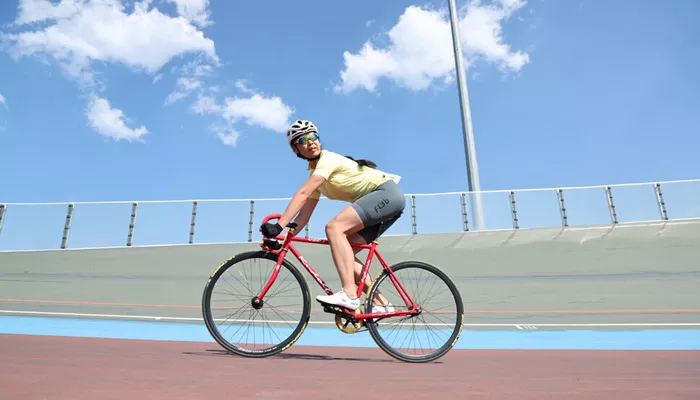Cycling is often seen as an individual sport. People watch riders compete alone, pushing their limits to cross the finish line first. But if you look deeper, cycling is very much a team sport. Riders depend on their teammates for success. Without teamwork, winning big races would be nearly impossible.
The Role of Teamwork in Professional Cycling
In professional cycling, teams work together to help their best rider win. Each team has a leader—the strongest cyclist who has the best chance of winning. The other riders, called domestiques, support the leader. Their job is to protect the leader, set the right pace, and even give up their own chances to win for the team’s success.
For example, in a long race like the Tour de France, teamwork is everything. The race lasts three weeks, covering thousands of kilometers. No single rider can do it alone. Domestiques bring food and water, block wind, and chase down attacks from rival teams. They sacrifice their energy so the leader can save strength for the final sprint or mountain climb.
Different Roles in a Cycling Team
Not every rider in a cycling team has the same job. Different cyclists have different strengths, and teams use these strengths to their advantage.
Sprinters are fast over short distances. They win flat stages by outsprinting others in the final meters. But to get to the finish line fresh, they need their team to control the race, keeping the pace high so no one can break away too early.
Climbers are light and strong in the mountains. They excel on steep roads where others struggle. In mountain stages, teammates help by setting a hard pace to tire out rivals before the leader makes a move.
Time trial specialists are strong against the clock. They ride alone at high speed, but even they need team support. In team time trials, every rider must work together perfectly to get the fastest overall time.
Domestiques are the hardest workers. They do the least glamorous jobs—carrying supplies, blocking wind, and chasing breakaways. Without them, the team’s star rider would waste too much energy early in the race.
Tactics and Strategy
Cycling is like a chess game on wheels. Teams must plan their moves carefully. They study the race route, know their rivals’ strengths, and decide when to attack or defend.
One common tactic is the lead-out train. In sprint stages, a team lines up in front of their sprinter, riding at high speed to keep rivals from passing. The last teammate pulls away just before the finish, leaving the sprinter fresh for the final burst.
Another tactic is blocking. If a teammate is in a breakaway, other riders may slow down the main group to help the break succeed. This forces rival teams to do all the work of chasing, wasting their energy.
In mountain stages, teams use pace-setting. Strong climbers ride at the front to tire out competitors before their leader attacks. This is called “putting the hammer down,” making it impossible for weaker riders to keep up.
Communication During the Race
Riders cannot talk much during a race—they are breathing hard, focusing on the effort. But they still communicate in different ways.
Team radios let the directeur sportif (team coach) give instructions from the team car. They tell riders when to attack, when to save energy, and what rivals are doing.
Hand signals and short shouts are also important. A rider might point at his bike if he has a mechanical problem, or wave a teammate forward to take the lead.
Even without words, teammates learn to read each other’s movements. They know when their leader is struggling and needs protection, or when a rival is weakening and it’s time to attack.
The Mental Side of Teamwork
Cycling is not just about physical strength—it’s also a mental game. A strong team gives a leader confidence. Knowing teammates are working for them helps riders push harder.
Trust is key. Domestiques must believe their sacrifices will lead to victory. The leader must trust that teammates will support them at the right moment.
When a team works well together, rivals feel the pressure. A united team can control the race, forcing others to react to their moves. This psychological advantage often leads to wins.
Amateur and Recreational Cycling
Teamwork is not just for professionals. Even amateur cyclists benefit from riding together.
Group rides teach riders how to draft—following closely behind another cyclist to save energy. Taking turns at the front makes the ride easier for everyone.
Cycling clubs organize team events, like charity rides or local races. Working together helps riders go faster and farther than they could alone.
Friends who ride together also motivate each other. On tough climbs or long distances, encouragement from teammates makes the effort easier.
The Importance of Sportsmanship
In cycling, teamwork also means respect. Riders from different teams sometimes help each other. If a top rival crashes, others may slow down to let them catch up. This tradition, called fair play, keeps cycling a noble sport.
Teams also share resources. If a rider has a flat tire, a rival team’s mechanic might lend a wheel. In extreme weather, riders from different teams may work together to stay safe.
This spirit of cooperation makes cycling unique. Even in competition, riders understand that everyone faces the same challenges.
Conclusion
Cycling may look like an individual sport, but it truly depends on teamwork. From professional races to weekend group rides, success comes from working together.
Teams plan strategies, assign roles, and sacrifice personal glory for the group’s success. Riders communicate, trust each other, and push their limits because they know they are not alone.
So, is cycling a team sport? Absolutely. No rider wins a big race alone. Behind every champion is a team that made victory possible.

